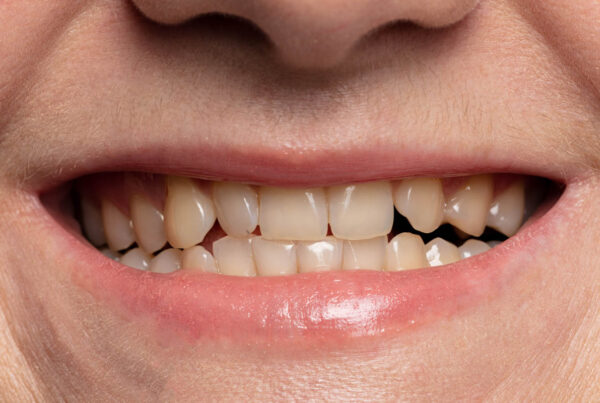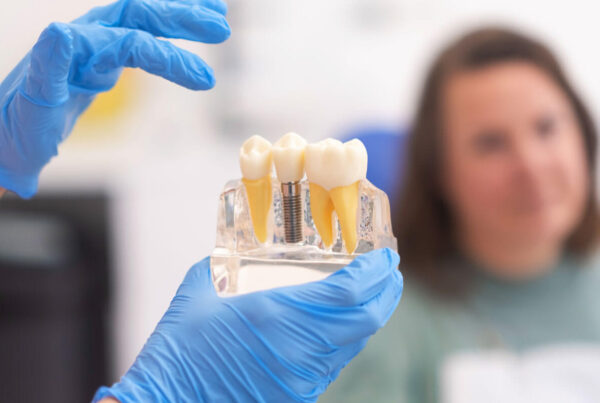When you come to Dentistry at 1818 Market Street for your regular dental exam, we always ask if you’ve been flossing.
And whether you answer yes or no, your gums always tell the truth. In reality, many Philadelphia dental patients don’t floss regularly – and this is understandable. Everyone knows that they are supposed to floss daily to help improve their oral health, yet many people still tend to skip this daily recommendation, telling themselves that brushing is enough. After all, picking up the floss can feel like an unnecessary extra step after you’ve finished brushing. What difference is it really going to make?
The thing is, flossing really does improve your dental health – studies have shown that regular flossing can reduce cavities and gum inflammation. But at Dentistry at 1818 in Center City Philadelphia, we know how tough it can be to get started. That’s why we’ve put together a helpful guide to get you to start flossing regularly.
Flossing is one of the most underappreciated habits, but it’s essential to great oral health, just as much as brushing on a regular basis. Flossing removes additional debris, plaque, and tartar that builds up overtime from your teeth. It gets into places your toothbrush can’t reach, and if not taken care of, can cause bad breath, cavities, and gum disease.

Here are some tips on how to make flossing simpler and easier to do:
- Use Plenty of Floss – Don’t try to stick to one string of floss to clean your teeth. Use multiple long, open strands to make getting in the crevices of your teeth easier. Ensure that you have a solid grip on the floss by wrapping it around your fingers.
- Floss Gently – Although being thorough can be beneficial, damaging your gums by pushing too hard on the floss can cause your gums to bleed and your mouth to become damaged. Aggressive flossing is painful, but by flossing more gently and steadily, you’ll be able to get rid of the plaque and debris from your teeth without hurting them.
- Get A Solid Grip – Finding a brand of floss that’s strong and durable is the key to effectively removing the food between your teeth.
- Find the right floss for your teeth – While floss might seem relatively straightforward, there are different types of floss and knowing which type works best for you is a key factor in making your flossing routine much easier. If you have teeth that are close together and difficult to floss between, a fine floss will help you navigate between them. Waxed floss and flavored floss help make flossing easy to perform and enjoyable, with a minty-fresh aftertaste. If you’ve struggled with flossing in the past, consider trying a different type that might be a better fit.

There are two main types of floss.
The first kind is nylon floss, which is a multifilament floss that can become stringy or can even break apart. The second kind is polytetrafluorethylene (PTFE) floss, which is a single filament floss that can fit easily into tight spaces.
Within the nylon category, you also have options for waxed and non-waxed. Waxed floss has a wax coating that goes over the nylon strands, enabling it to squeeze into tight spaces while being more resistant to breakage. Non-waxed floss is composed of approximately thirty-five small nylon strands twisted together and is more prone to breakage. However, it can fit into spaces even tighter than waxed floss and will squeak against teeth, providing a good indicator that you have adequately removed plaque.
- Use Flossing Picks – Floss picks hold onto small sections of floss to make the movements involved easier to handle. If the strand of string becomes difficult for you, then use a dental floss pick to get at the back angles of your teeth. When your fingers can’t reach to the back molars of your teeth, floss picks will be able to easily reach in the backs of your teeth without causing much discomfort.
- Try a waterpik – Also known as water flossing, water picking offers an alternative to traditional flossing. This method uses a handheld appliance that flushes the space between teeth with water. The water’s pressure massages the gums and pushes food particles away from the teeth. If you dislike regular floss, this might be a better option. Note that waterpiks don’t usually remove all plaque, so combining a water flosser with regular floss is best.
- Do It Daily – Yes, practice makes perfect! The more you floss your teeth, the better your technique will become and before you know it, you will be flossing quickly and effectively. In addition, your gums will adapt to the flossing and will stop bleeding after about a week of continuous flossing. The best way to make flossing easier is to simply make it a dental habit. After about two weeks of daily flossing, it will become incorporated in your dental routine and you will barely have to think about doing it.
- Set flossing reminders – Struggle to remember to pick up your floss? Add a little structure to your habit to make sure it gets done each day. First, determine whether morning flossing or evening flossing is preferable – most patients choose evening since they tend to have a little more time to spend on oral hygiene before bed. Then, pick a reminder that’s going to help you stay on top of your daily flossing. You might put a post-it on your bathroom mirror to remind you to pick it up. Or, you could set a bedtime phone alert that puts floss at the forefront of your thoughts. Either way, keep this up for a couple weeks and you’ll soon be flossing without specific reminders.
- Make flossing fun – It can be tough to get started with regular flossing. If you have gingivitis or your gums are sensitive, you’ll likely experience some bleeding and tenderness. But this will fade within a few days of consistent flossing, and should be gone entirely within a week. After that, you can focus on actually enjoying flossing. It adds a whole new level of cleanliness to your mouth, which you can feel and appreciate. You might be surprised to see just how much food you remove from between your teeth, and how much better you feel afterwards.
- Revisit your technique – Flossing is only effective if you’re doing it the right way, and it’s easier to floss poorly than you might expect. Take this opportunity to check up on your flossing technique and make sure it’s working. Flossing properly is not simply pulling a string between your teeth and being done. Instead, you need to thoroughly clean the surface of your tooth and make sure you are applying this method to every tooth. With that being said, you want to make sure you have enough floss to easily reach your teeth, while also making sure you can use a fresh piece of floss for each tooth. Pull out a piece of floss that is 18 inches long and wind it around the middle finger on both hands. Then, pinch the floss between the thumbs and first fingers, leaving about 1-2 inches free between your hands. Pull the floss tight, using the index fingers to guide the floss between two of your teeth by sliding gently back and forth. Wrap the floss around each tooth, sliding it up to the gum line.

Repeat until you’ve flossed between all your teeth – and don’t forget the spaces behind your molars!
- Track your progress – Take note of when you start flossing regularly – put it on your calendar as START. At your next few dental exams appointments at our Philadelphia dental office, ask your hygienist about how your plaque buildup compares. You might be surprised to see your teeth and gums exhibiting less plaque and fewer dental problems – thanks to floss!
Oftentimes, flossing proves to be a more difficult and timely endeavor compared to brushing, which makes it easy to simply choose brushing instead of flossing. However, this is not recommended by your Philadelphia dentist and there are some things you can do to make flossing easier. Through adjusting your technique and making flossing easier, you will be able to flossing more quickly and effectively, so that daily flossing becomes an easy part of your dental routine.
Taking care of your teeth through flossing will help maintain your oral health, but one of the best ways to keep maintaining it is by visiting our Center City Philly dentist office for regular checkups.
If you’re ever looking for floss recommendations or help with your technique, we will be happy to go over it with you at your next Philadelphia dentist appointment.




